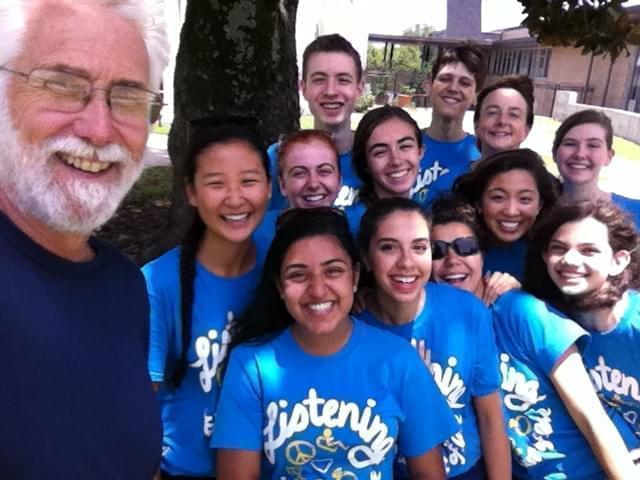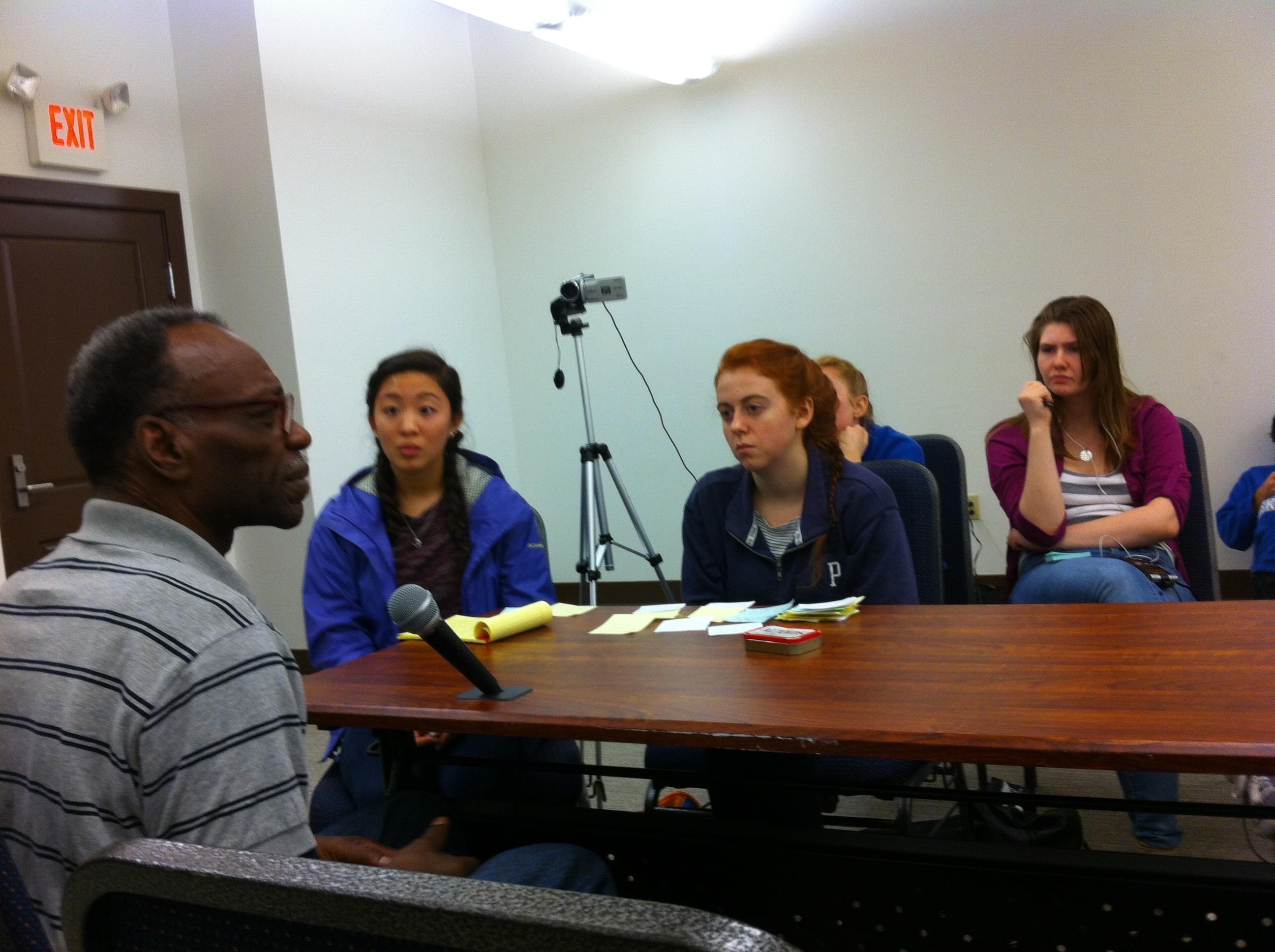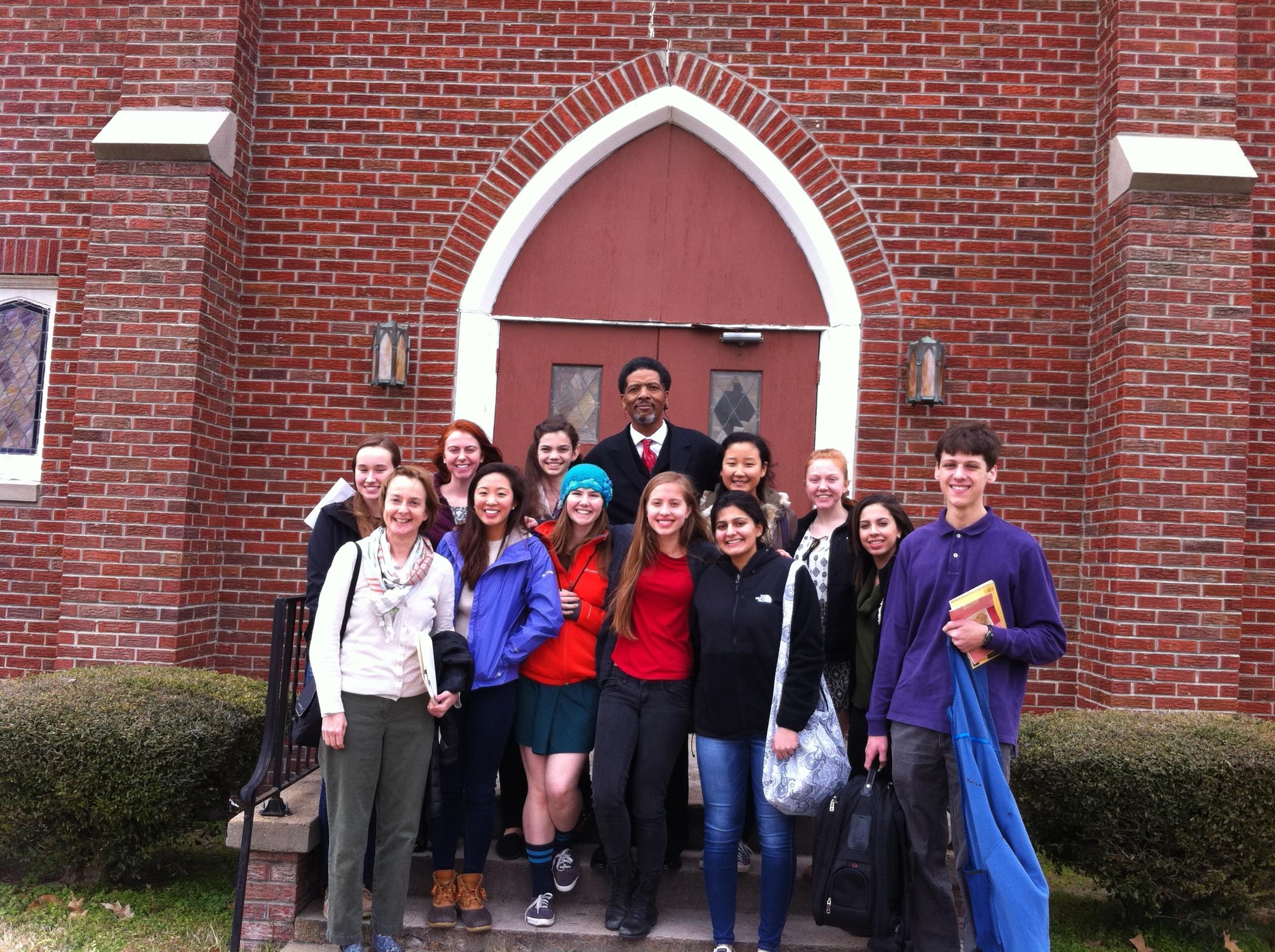Introducing the Rebuilding Foundations project
Many people are acquainted with the Mississippi Delta as the home of the blues. Others may know a darker side of the Delta, as an epicenter of racial injustice, epitomized by the tragic murder of Emmett Till which helped inspire the modern civil rights movement. And some will also recognize that the Mississippi Delta remains one of the most impoverished areas in the country, with a major share of that misery visited upon its African-American population.
Many people are also familiar with the work of Habitat for Humanity, the non-profit organization that seeks to bring affordable, decent housing to people in need around the world. Prospective homeowners and Habitat volunteers work side by side under the guidance of skilled specialists. By bringing volunteers and local homeowners together in this effort, Habitat has managed in remarkable ways to break down some of the racial and class divides that continue to bedevil not just the Delta but the entire country.
Habitat for Humanity affiliates are active in Champaign County and in many communities across the Midwest. So why would people from east-central Illinois choose to go all the way to the Mississippi Delta to help build Habitat houses? Why would groups of volunteers from churches and schools in east-central Illinois keep returning to the Delta, once, twice or even more often, every year? And why would over two dozen central Illinoisans choose to relocate to the Delta to expand the community development work that Habitat has been involved with there since the mid-1980s? These are some of the questions that the new audio documentary explores.

Bill Sutton (Uni teacher), Keisha Patel, Rima Rebei, Katie Tender, Maggie Tewksbury Middle row: Ha-il Son, Zina Dolan, Iulianna Taritsa, Carissa Hwu Back row: Even Dankowicz, Andrew Stelzer, Janet Morford (Uni teacher) and Ellen Rispoli
“Rebuilding Foundations: Housing and Hope in the Mississippi Delta,” the Uni students' documentary, traces the history of the need for decent housing in the region, due to racial inequities created through sharecropping, the mechanization of farming, inadequate public education and residential segregation. The documentary explores the creation of Habitat for Humanity, the founding of the first Habitat affiliate in the Mississippi Delta in the mid-1980s, and the beginnings of the "Collegiate Challenge" initiative in the 1990s.
By hearing the perspectives of homeowners, Habitat staff and community leaders, we get a sense for how important Habitat has been to the well-being of families and children and the vitality of many communities. By listening also to stories of volunteers from Illinois who found new meaning and direction for their own lives, we come to understand the mutual benefits of community development initiatives that bridge racial, socioeconomic, religious, generational and regional divides.
Under the guidance of teachers Janet Morford and Bill Sutton, Uni High students began this project in July 2015. Conducting oral history interviews for the first time “in the field” (outside of the WILL recording studios), Uni students recorded 20 in-depth interviews with long-time residents of Coahoma and Tallahatchie Counties in Mississippi, as well as 16 interviews with people who live in central Illinois but have worked with community development organizations in the Delta. They gathered testimonies from Habitat homeowners, construction specialists, affiliate coordinators, volunteers, leaders of churches and other local organizations.
Some interviewees explained how the practices of sharecropping contributed to the dire need for decent housing in the Delta. Historically, landowners had provided simple shacks for workers to live in close to the fields. However, when agriculture was mechanized, wages increased slightly but landowners employed fewer field hands and felt no need to invest in their housing. As Dorothy Jenkins of Sherard, Mississippi recalls, "After wages had gone up and machinery was taking over, farmers were not providing decent houses for people to stay in. You could stay wherever you want to, at your own risk. If the house had a top on it, all well and good. They were not going to put out any money to fix it." Faced with an inadequate local stock of housing, community leaders such as Dorothy Jenkins came to see Habitat for Humanity as a way to "bring dignity" to the lives of people around them.
Other interviewees underscored the fact that Habitat for Humanity enabled blacks and whites to get to know each other by working side by side. Pastor James Jackson, who grew up in Mississippi and works with youth at risk in Clarksdale, put it this way: "Every time Habitat came or you guys came down from Urbana (...) I thought it was really neat that I see a group of whites (...) coming down in a black neighborhood -- and it kept reaffirming to me that the past is the past. We got whites that really care. (...) We had so many whites that got involved, that kinda motivated [me]: 'I like this. I can work with this.' ”

Interviewee: Bill Foster
Interviewers: Carissa Hwu, Zina Dolan, Ellen Rispoli
Bill Sutton, who retired from Uni High in May 2017, also stressed the mutually beneficial nature of the connections forged over time with people in Mississippi: "Working with the people connected to the Habitat affiliates in the Delta has been THE most enriching aspect of my life (...) Much of that enrichment has come from being exposed to the incredible graciousness of the communities being served. But another major aspect has come from watching my students — over 400 in the 21 years Uni has partnered with Delta affiliates -- also come alive in this process. What excites the students is that they can come to see their own potential through a non-academic, non-privileged lens. In this work, they gain exposure to experiential realities of trust and reconciliation otherwise closed to them, and they respond enthusiastically (even joyfully) to these opportunities to participate in positive change."
Uni alumna Ellen Rispoli is one such student. After participating in the interview teams in both Illinois and Mississippi, she observed: "Before going to the Delta, to serve, to listen, and to love all had three different meanings. But the people I met showed me that they're all the same."
Simply meeting people involved in community development and listening to their stories was an eye-opening experience for many students. Maggie Tewksbury is a Uni senior who conducted multiple interviews in the Delta, while also serving as a volunteer for Habitat and other community organizations. Listening to people's stories helped her grasp what she called "the unfair, and yet ingrained, inequalities in our society that affect all of us in ways that I had not previously understood."
Uni senior Stella Faux has also made multiple trips to the Delta, both to conduct interviews and to volunteer with Habitat and with Griot, a local arts enrichment organization. Participating in this project made it necessary, as Stella put it, "to stare things like white supremacy and enduring racism and inequality in the face, as well as to acknowledge that systems of oppression are rooted in the history of this country. However, the story of Habitat in Clarksdale also sends a message of solidarity and hope in the face of obstacles."

Front row: Janet Morford, Carissa Hwu, Ellen Rispoli, Stella Faux, Mallika Luthar, Andrew Stelzer
Middle row: Hadley Shapland, Zina Dolan, Maggie Tewksbury, Rev. Willie Williams, Ha-il Son, Kathryn Dullerud, Rima Rebei
Taken together, the stories that the Uni students collected enabled them to tell a larger story: one that is rooted in the historical legacy of slavery, sharecropping and Jim Crow, but that begins a new chapter in the 1980s, leading to racial reconciliation, stronger communities, and greater opportunities for many. It is a story about significant change in people’s lives -- the renewed faith and sense of purpose that volunteers from Illinois gained by working in the Delta as well as the hope and dignity that people burdened by generational poverty experienced through the work of Habitat for Humanity and other community development organizations.
Yet conducting and transcribing over 35 interviews was only the beginning of the process. Led by senior student producers Carissa Hwu, Annemarie Michael and Andrew Stelzer and teacher Janet Morford, a team of Uni students then devoted countless hours to selecting and editing interview segments and background music, writing, revising and voicing the script, and bringing these pieces together in an audio documentary. Learning to produce a coherent documentary using this material was in itself a valuable experience. As Andrew Stelzer recalls, the students had to "learn how to adapt quickly and improvise on this project, picking up new skills as needed to get the job done. We also learned a lot about teamwork and the amount of effort and organization it takes to complete a project of this scale."
Jason Croft, Production Manager at Illinois Public Media, coached the novice producers as they neared the end of the two-year process. “The level of seriousness and professionalism these students brought to the project was amazing,” said Croft. “They were willing to put in the extra time—nights and weekends—to make sure this documentary sounded right. They should be proud of what they accomplished.”

